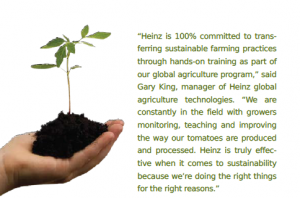
| |
Production |
Delivery |
Packaging |
| Dempsters Bread- 100% Canadian Whole wheat |
Described in my previous post under breakfast |
Calgary, Alberta= 978km after processed |
Plastic Bag- discussed in previous post |
| Bandon Cheese |
I had purchased this cheese last weekend in the states. Brandon Coast Foods specializes in providing services in the field of Cheese and Dairy. I could not find a website for the company, however I would assume that the company operates rather locally, only distributing throughout the west coast. This would entail a smaller scale establishment with potentially lower emissions than a large industry would |
The cheese was distributed out of Tillamook Oregon |
Plastic wrapper- Main component being made from polyethylene. Similar to what was discussed in my previous “8.7 plastic shopping bags contains enough embodied petroleum energy to drive a car 1km”. which I think provides some comparison in more concrete terms to plastic packaging’s effect on the environment. |
| Heinz Ketchup |
Established a Heinz seed company in 1970 with the goal of creating non-genetically modified hybrid tomatoes. As a result of their market dominance, 34% of the world processed tomatoes are grown using Heinz Seeds. The large scale cultivation of the tomatoes would involve a lot of heavy machinery resulting in a hefty emission bill. |
Processed in Ontario- two locations Leamington, and St. Marys. I found one main distributer located on the West Coast , Woolf Farming located in Fresno California |
Plastic container- similar to my last post when discussing the Fred Myer Peanut Butter |

Tim Hortons Coffee
I was thoroughly impressed with Tim Horton’s website and their environmental stewardship. Each page was accompanied with their slogan “Tim Hortons understands that changes in the environment need to be managed and embraces our responsibility to do our part” Furthermore, they make their manufacturing and distributive operations easy to find. Tim Hortons coffee is primarily grown in by roughly 2500 small scale farmers in central and south America by. The coffee beans are then shipped to roasting plants, located in Ancaster Ontario and Rochester New York and then later redistributed across the country via commercial truck fleets. In addition, Tim Hortons is taking on initiatives to improve their transportation efficiency. In 2012, they began the implementation of Electronic On Board Recorder to track the many facets of drivers daily operations (video can be seen here https://www.youtube.com/watch?v=f5CFzowGZ0s).
Nevertheless, I was still quite taken away by how much global travel was involved in getting my daily coffee fix. For me to have a Tim Hortons cup of coffee it would have to travel over 8000 or so km from South America to Ontario, and then by another 3000 km roughly across Canada. My cup of coffee would roughly have travelled 11000km. Just imagine the amount of oil I’m drinking.

Small scale Coffee Farms




